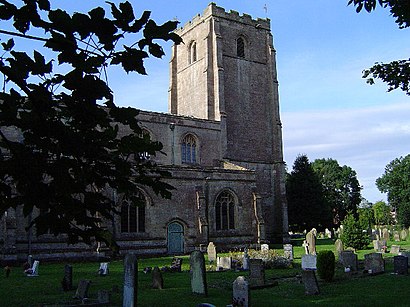See Fishtoft, Boston, on the map
Directions to Fishtoft (Boston) with public transport
The following transport lines have routes that pass near Fishtoft
Bus:
How to get to Fishtoft by Bus?
Click on the Bus route to see step by step directions with maps, line arrival times and updated time schedules.
Bus stations near Fishtoft in Boston
- Rimington Road, Fishtoft,3 min walk,
Bus lines to Fishtoft in Boston
- B2,Boston - Fishtoft,
- B7,Boston - Skegness,
- B41,Boston - Old Leake,
What are the nearest stations to Fishtoft?
The nearest stations to Fishtoft are:
- Rimington Road, Fishtoft is 160 meters away, 3 min walk.
Which Bus lines stop near Fishtoft?
These Bus lines stop near Fishtoft: G61
What’s the nearest bus stop to Fishtoft in Boston?
The nearest bus stop to Fishtoft in Boston is Rimington Road, Fishtoft. It’s a 3 min walk away.
See Fishtoft, Boston, on the map

Public Transit to Fishtoft in Boston
Wondering how to get to Fishtoft in Boston, United Kingdom? Moovit helps you find the best way to get to Fishtoft with step-by-step directions from the nearest public transit station.
Moovit provides free maps and live directions to help you navigate through your city. View schedules, routes, timetables, and find out how long does it take to get to Fishtoft in real time.
Looking for the nearest stop or station to Fishtoft? Check out this list of stops closest to your destination: Rimington Road.
Bus:
Want to see if there’s another route that gets you there at an earlier time? Moovit helps you find alternative routes or times. Get directions from and directions to Fishtoft easily from the Moovit App or Website.
We make riding to Fishtoft easy, which is why over 1.5 million users, including users in Boston, trust Moovit as the best app for public transit. You don’t need to download an individual bus app or train app, Moovit is your all-in-one transit app that helps you find the best bus time or train time available.
For information on prices of Bus and Train, costs and ride fares to Fishtoft, please check the Moovit app.
Use the app to navigate to popular places including to the airport, hospital, stadium, grocery store, mall, coffee shop, school, college, and university.
Fishtoft Address: Saxon Gardens street in Boston

Attractions near Fishtoft
- Pe21 0rs
- Pe21 0ry
- Fishtoft Post Office
- J T & W E Swain
- Finnforest Uk Ltd.
- C J Pettitt Transport Ltd.
- Martins Produce
- Boston & District Alzheimers Disease Society
- Frank Pettitt
- J Woods & Sons
- Fogarty Property Ltd
- Brian Fairweather Autos
- Alec Coney (Farms) Ltd.
- Leaf Dobson Chartered Accountant
- Pe21 0rr
- Pe21 0rz
- Pe21 0sg
- Pe21 0qu
- Pe21 0qw
- Pe21 0dn
How to get to popular attractions in Boston with public transportation
- The Observatory (Wetherspoon), Erewash
- Currys PC World, Nottingham
- Currys PC World, Lincoln
- Lakeside Arts Centre, Nottingham
- Immingham Docks, North East Lincolnshire
- Huthwaite, Ashfield
- Lock Keeper, Bassetlaw
- Nando's, Kettering
- Francis Crick House, Northampton
- Nuffield Health Nottingham Fitness & Wellbeing Gym, Gedling
- De Montfort University, Leicester
- The Lincolnshire Wolds, East Lindsey
- Sutton-In-Ashfield, Ashfield
- Bagworth, Hinckley And Bosworth
- Currys PC World, Blaby
- Forest Fields, Nottingham
- Peterborough Marriott Hotel, Peterborough
- YBS Group - Lynch Wood, Peterborough
- Soar Valley Way, Leicester
- Bilborough College, Nottingham